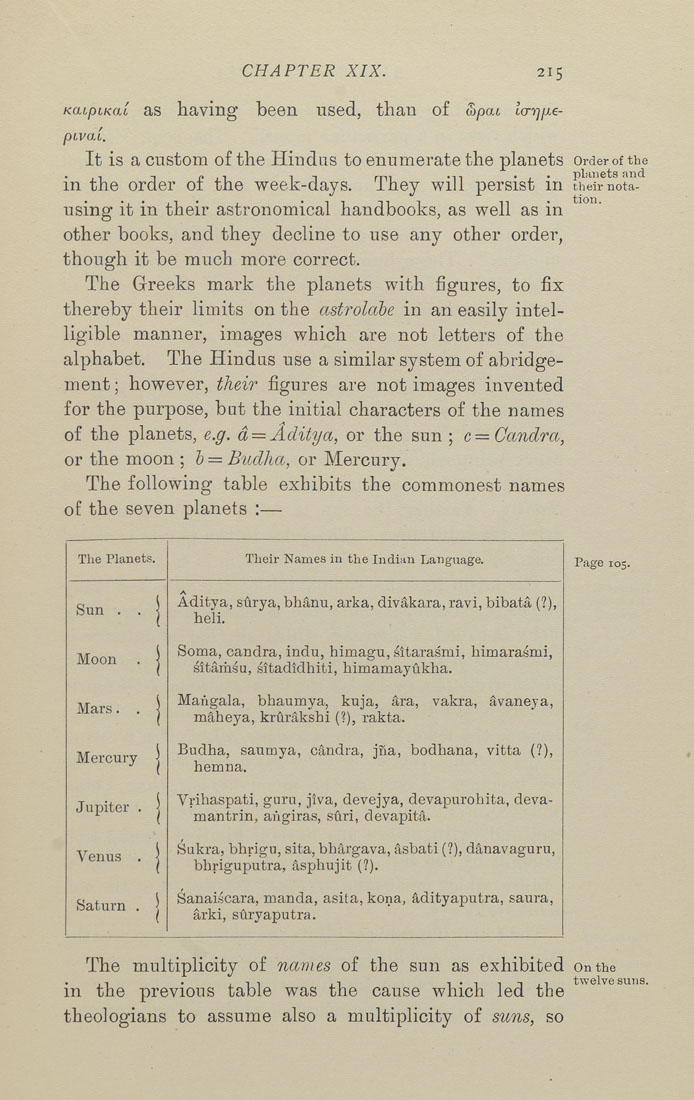CHAPTER XIX.
215
/catptKat as having been used, than of Spat tV^jfte-
ptvat.
It is a custom of the Hindus to enumerate the planets order of the
in the order of the week-days. They will persist in their nola-
using it in their astronomical handbooks, as well as in
other books, and they decline to use any other order,
though it be much more correct.
The Greeks mark the planets with figures, to fix
thereby their limits on the astrolctbe in an easily intel¬
ligible manner, images which are not letters of the
alphabet. The Hindus use a similar system of abridge¬
ment ; however, their figures are not images invented
for the purpose, but the initial characters of the names
of the planets, e.g. a —Aditya, or the sun ; c=Cctndra,
or the moon ; b = Budha, or Mercury.
The following table exhibits the commonest names
of the seven planets :—
The Planets.
Their Names in the Indian Language.
Sun . . j
Moon . j
Mars. . j
Mercury j
Jupiter . j
Venus . ]
Saturn . |
Aditya, surya, bhanu, arka, divakara, ravi, bibata (?),
heli.
Soma, candra, indu, himagu, sitarasmi, himarasnai,
sitamsu, sitadidhiti, himamayukha.
Mangala, bhaumya, kuja, ^ra, vakra, avaneya,
maheya, krurfikshi (?), rakta.
Budha, saumya, candra, jna, bodhana, vitta (?),
hemna.
Vrihaspati, guru, jtva, devejya, devapurohita, deva-
mantirin, angiras, sviri, devapitfi.
Sukra, bhrigu, sita, bhargava, slsbati (?), dS,navaguru,
bhriguputra, asphujit (?).
Sanaiscara, manda, asita, kona, ft,dityaputra, saura,
arki, stiryaputra.
The multiplicity of navies of the sun as exhibited onthe
in the previous table was the cause which led the
theologians to assume also a multiplicity of suns, so
|








